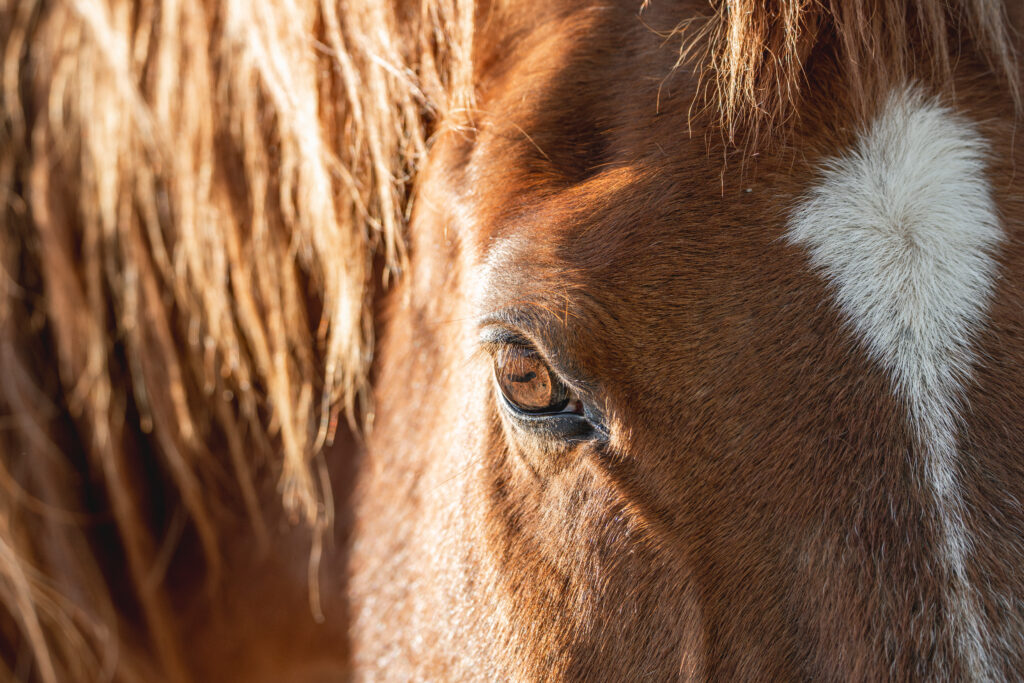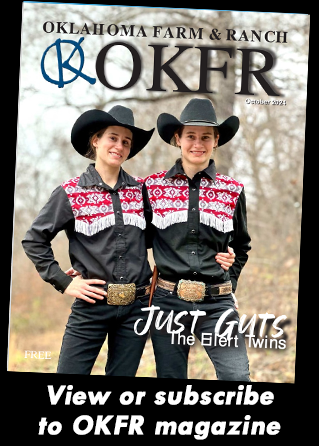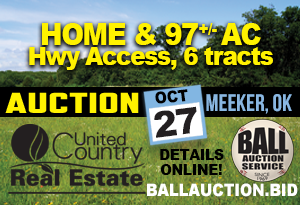Equine
On the Road with Emily Miller-Beisel
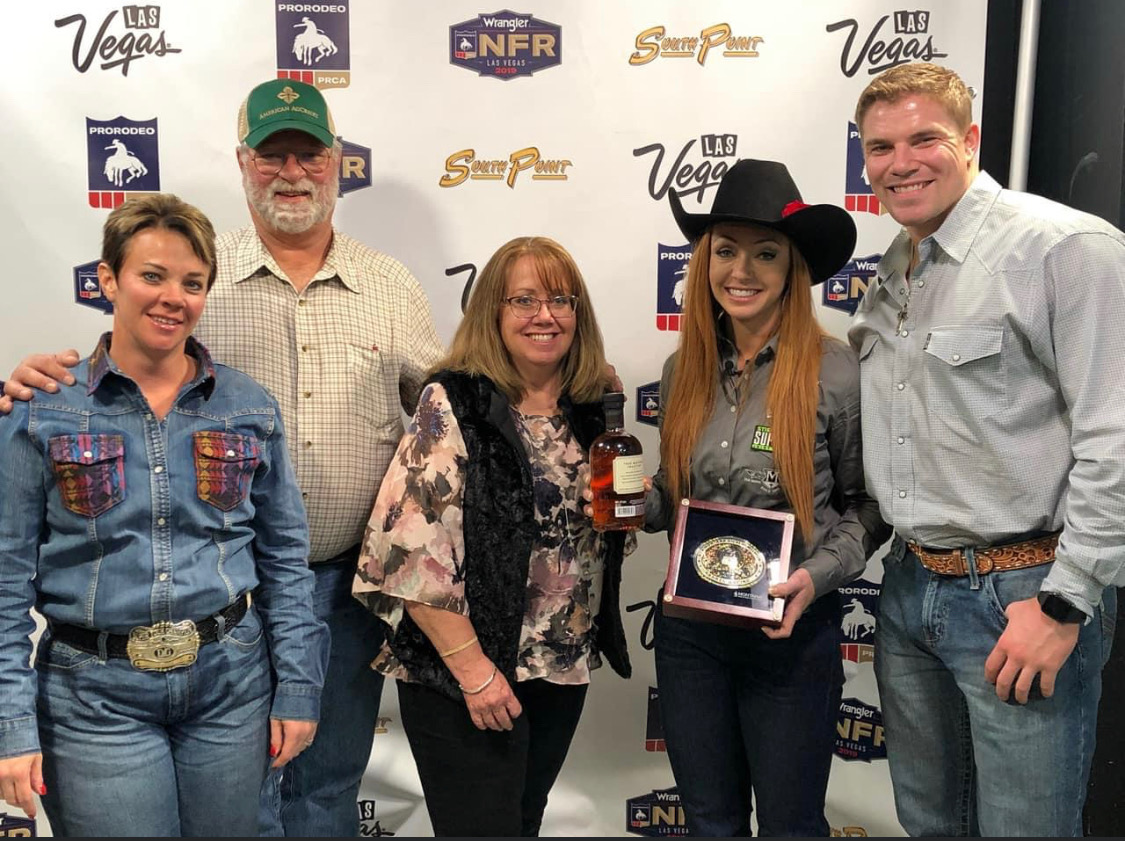
This year’s Wrangler National Finals Rodeo will look a bit different from year’s past, but for the cowboys and cowgirls that will be competing, the excitement is still there.
Weatherford’s Emily Miller-Beisel is one of several Oklahomans representing the Sooner State at this year’s Finals.
Growing up in southwest Kansas, near Garden City, Emily was the middle child. Although the area was a mecca for agriculture, her family wasn’t involved with horses at all. Luckily, the right people came into her life, and she went from being a horse-crazy child to one of the top barrel racers in the United States.
In 2019, Miller-Beisel lit up the Thomas and Mack Arena, winning two rounds and finishing second in the average. She planned for a light winter rodeo schedule in 2020, but COVID-19 squashed those plans. She persevered, securing her second WNFR berth. Now Emily, recently married to husband Austin Beisel, works hard to balance her rodeo world with her normal, everyday life.
Getting Started
Glancing at some of her childhood drawings might have foreshadowed Emily’s future career. “I had a passion for animals. I used to draw horses with my grandma all the time,” she recalled. “I kept telling my parents I wanted a horse, but they didn’t believe me.”
Her insistence on getting her own horse pushed her mother, Margaret, to drastic measures. “She had a friend who owned show horses. My mother told her to put me on the biggest horse there and scare me, because I had to get over this phase,” Emily said laughing.
The plan backfired, big time. “By the end of the day I was hooked. Then she didn’t do a great job screening my babysitter, who was a barrel racer. Her name is Jana Turner, and I was about seven years old when I started going with her and her parents to Little Britches and then High School rodeos. I wanted a horse and I wanted one yesterday,” she recalled.
Finally, just before her eighth birthday, her parents bought her a horse. His name was Roper, and the two dabbled in 4H Horse Shows before venturing into Little Britches rodeos. “That’s where I really figured out that I wanted to go fast. I went from there to junior high and high school rodeos,” Emily said.
An all-around cowgirl, Emily competed in barrel racing, pole bending, breakaway roping, team roping, cutting, and goat tying. She qualified for the National High School Rodeo Finals three years, and one time in five events – all except team roping. Although she enjoyed the roping, barrel racing and pole bending were her passion.
After graduating high school, she spent two years at Garden City Kansas Community College. From there, she made the trip south to Weatherford, Okla., to finish up her degree at Southwestern Oklahoma State University. “I got my bachelors’ there, and then the University of Oklahoma had a satellite campus in Weatherford for dental hygiene, so I graduated from OU in 2016. That was a major part of my decision to move to Weatherford. With as many horses as I had I could set up and stay here for the four years of school,” she explained.
So why a career in dental hygiene? Because she knows first-hand the impact good dentistry can have. “Growing up I had all kinds of problems with my teeth. I was always in the dental office. I loved my dentist, and every time I went, I looked forward to it. When I finally got done with all my work, people would comment about how great my smile was, and I wanted to be able to help other people get to that point,” she said.
Emily’s passion for her career led her to precariously balance work and rodeo during a whirlwind year when she found herself on the cusp of a WNFR appearance. “In 2017, when I was borderline making the finals, people thought I was crazy because I wouldn’t quit my job, but it was such a love of mine,” she said. “My boss was flexible, and my patients were so excited and cheering me on.”
Making the WNFR
Although Emily began her professional rodeo career in 2013, things didn’t begin to heat up until 2016, when she earned a trip to the Ram National Circuit Finals Rodeo. In 2017, a domino-like effect resulted in a huge leap in the world standings. “All of that was a surprise. The stars all aligned. I won the Prairie Circuit Finals and then was able to go back to the RNCFR and Calgary where I won my pool, made the finals, and finished fourth in the Shootout round,” she recalled. “All of a sudden I found myself in the world standings and I had no intention of hauling for the NFR. It caught me off guard and I had no game plan.”
When the last of the money from the regular season rodeos was tabulated, Miller had just narrowly missed qualifying for the Super Bowl of rodeo, finishing in 17th place. “All I was thinking was, ‘How do I do that again?’ I wanted to see it all the way though,” she said.
To do that, Emily knew she would need more horsepower. “I sold my back-up horse, who was super nice, to a really good family. I approached Renee Ward and asked if Chongo was for sale,” she said, referencing the striking grey. “I had tried him when he was five, and ultimately bought a different horse, but he had always been in the back of my mind. She said he wasn’t for sale at that point, but low and behold, a month later, she called and said he was for sale.”
In a typical story, that’s where the fairytale would begin, but for Miller, it seemed more of a nightmare. She and the talented gelding would not mesh. “I thought I had ruined him. He was great, but I was working him completely wrong and he was just mad at me. Luckily, I was able to go back to Renee and Kylie (Weast), who had trained him. Kylie took him at least 30 days and put him back together,” she admitted. “I went and rode with Kylie every week, just figuring out my horse. It’s funny, because you never know with horses. It’s not the same as a car where you can just switch out a part and fix them. They have personalities and it’s not black and white.”
With Weast’s help, Emily and Chongo began to gel. In the meantime, she won enough money on her other horses to end the year with more than $46,000 in earnings. “My mare Foxy carried me in 2018. She kept me in the ranks so I could get back to the buildings for 2019,” she said, referring to the big-money rodeos held during the winter. “2018 was one big learning curve, but we got qualified for the rodeos we needed.”
The game plan for 2019 was set; Emily had the horses and had set herself up to compete at the big rodeos. “I wanted to capitalize on what we had done in 2018. I had more experience, and was able to figure out what rodeos worked for me and my horses. I had always bombed out over Cowboy Christmas; I don’t think I had ever won more than $1,000 during that time before, but in 2019 I was the high-money winner,” she said. “I think the deciding factor was the experience of knowing my horses and where to take them to set them up for success.”
Soon, it was December in Las Vegas, and Emily was prepared to make her debut. Even now, a year later, she still gets chills recalling her first horseback view of the iconic arena. “I know Arlington will be awesome this year, but there is just something about the Thomas and Mack. You can’t replace that feeling. We’ve watched it since we were little, and to finally make it to that point is incredible,” she shared.
Another first-time feeling? The legendary grand entry. “The first night when we did that was the most surreal feeling. Running in there with all the people who had worked so hard to get there gives such an irreplaceable feeling. To make it to that point, you have such a sense of respect and admiration for everyone there,” she said.
Emily went on to win two rounds, the first and fourth, and finish second in the average standing, ending the year as third in the World. “It was just a fairytale. It’s just crazy. I just really zoned in. I knew I had to ride my horse the best I could, and not let him down,” she said. “I tried to be as mentally prepared as possible.”
Read more in the December issue of Oklahoma Farm & Ranch.
Equine
Meeting the Nutritional Needs of Older Horses
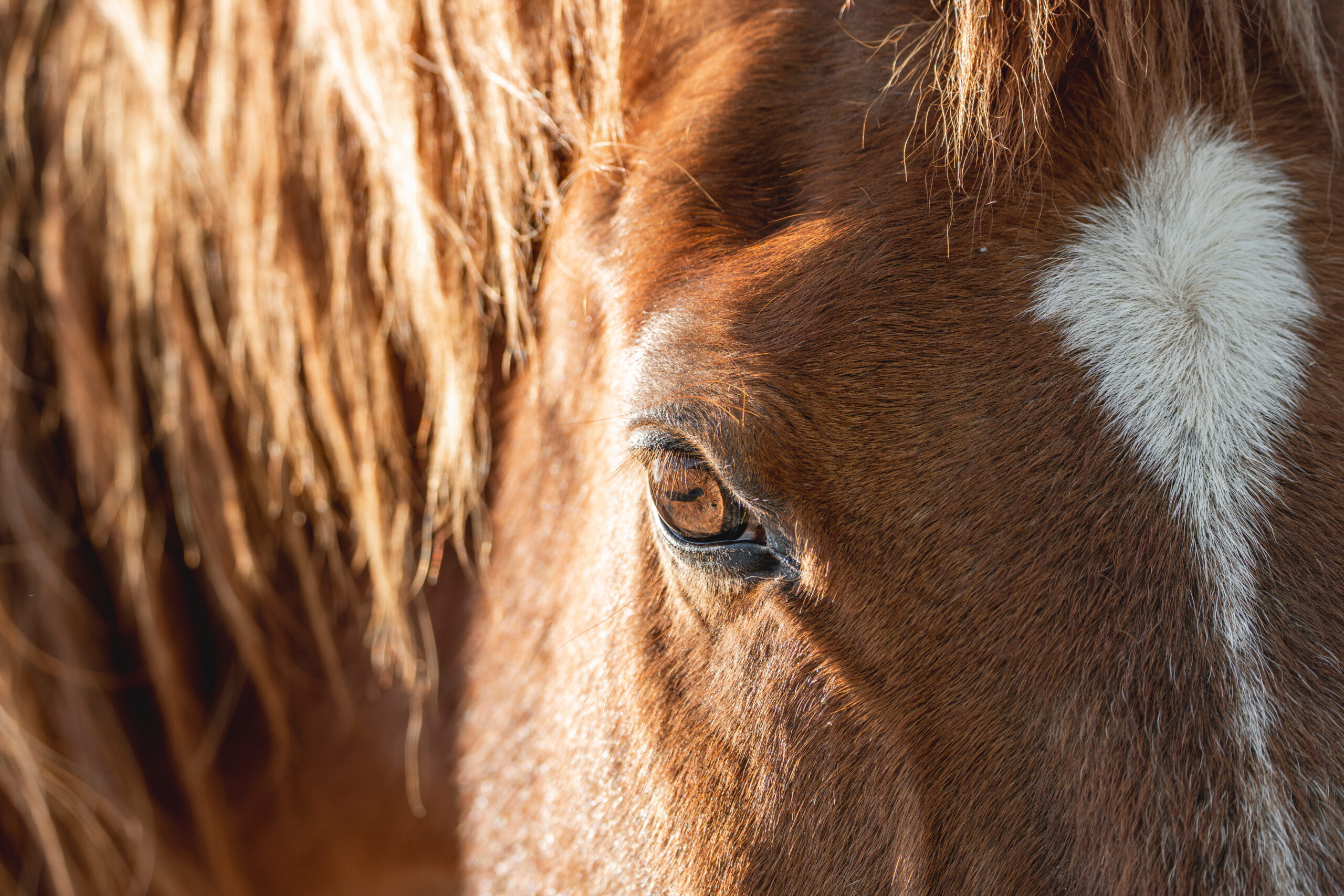
As horses age, their nutritional needs change significantly, necessitating careful adjustments in diet and management to maintain their health and quality of life. Older horses, often categorized as seniors around the age of 20, may face a variety of age-related challenges, including decreased digestive efficiency, dental issues, and metabolic disorders, all of which require tailored nutritional strategies.
Challenges and Considerations for Senior Horses
One of the primary challenges in feeding older horses is their reduced ability to digest and absorb nutrients. As horses age, their digestive systems become less efficient at processing essential nutrients like proteins, vitamins, and minerals. This decline can lead to conditions such as muscle loss, weight loss, and decreased immunity, making it crucial to adjust their diets to meet these changing needs.
Dental health is another significant concern. Many senior horses experience dental issues, such as worn or missing teeth, which can impede their ability to chew and digest forage effectively. For these horses, switching to a senior complete feed—formulated to be highly digestible and to meet all of the horse’s nutritional needs—can be beneficial. These feeds are designed to replace forage entirely when necessary, ensuring that even horses with severe dental problems can still receive a balanced diet.
Management Strategies
In addition to dietary changes, proper management practices are essential for the well-being of senior horses. Regular veterinary check-ups are critical to monitor their health and detect any early signs of age-related diseases. Common conditions like Cushing’s disease and metabolic syndrome can have a significant impact on a horse’s nutritional requirements. For example, horses with metabolic disorders may need a diet low in sugars and starches to prevent spikes in blood glucose and insulin levels.
Moreover, older horses often require adjustments in their living conditions to reduce stress. As they age, horses may become more sensitive to changes in their environment, such as temperature fluctuations or alterations in their social groups. Ensuring a stable, comfortable environment with gradual changes can help mitigate stress and maintain their overall health.
Feeding Recommendations
When designing a diet for an older horse, it’s important to consider factors such as body weight, activity level, and specific health conditions. Senior horses typically require a diet rich in easily digestible fiber, with added fats and proteins to compensate for their decreased digestive efficiency. Probiotics and prebiotics can also play a role in supporting gut health and improving nutrient absorption.
It’s essential to avoid feeding dusty or moldy hay, as older horses are more susceptible to respiratory issues and gastrointestinal problems. Soaking hay before feeding can help reduce dust and make it easier to chew for horses with dental issues. Additionally, complete feeds that incorporate all necessary nutrients can be an excellent option for horses that can no longer consume enough forage.
Caring for an older horse requires a holistic approach that combines tailored nutrition, careful management, and regular veterinary care. By understanding and addressing the unique needs of senior horses, owners can help their equine companions age gracefully and maintain a good quality of life. Every horse is an individual, so working closely with a veterinarian or equine nutritionist to develop a personalized care plan is essential for ensuring their long-term health.
For more detailed information on managing the nutritional needs of older horses, you can refer to resources such as OSU Extension, The Horse, Florida IFAS, and The Open Sanctuary Project.
This article originally appeared in the September 2024 issue of Oklahoma Farm & Ranch.
Equine
Trailer Safety Checklist
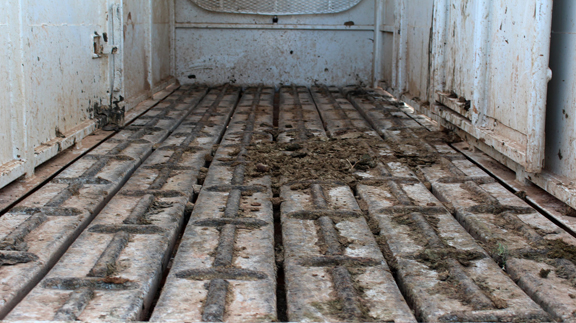
By Janis Blackwell
As the season arrives to gear up for participation in your equine event of choice, one thing remains a constant for all horse owners. That constant is our responsibility to insure the safety of our horses by being diligent to maintain the integrity of the trailers in which we haul them. There are a number of things that can be dangerous both inside and outside of your trailer. Whether you traveled all winter long or whether your trailer sat unused or was used very little through the cold weather months, at least once a year your trailer is due a thorough going over. So here we go with a checklist that will help you insure a happy and safe trip for you and your equine partner.
- A sound floor is absolutely imperative. Whether your floor is aluminum, steel or wood, it should be cleaned regularly after use to preserve it. Urine and manure will erode and weaken all types of floors. Even rubber mats will not prevent erosion of your floor. (Maintenance tip: remove mats and wash aluminum floors often to prevent erosion.)
- Especially check wooden floors for rotten boards. Immediately replace questionable flooring before hauling. (Maintenance tip: For wood, remove mats and wash out manure and debris. Coat wooden floor in a cheap motor oil. Allow to sit in hot summer weather until the oil soaks in. Be careful—floor will be slippery until oil cures into the wood. This treatment yearly will preserve a wooden floor for much longer than normal as it repels urine and protects the wood).
- Keep the interior and exterior washed to enable you to check for rusted out places, leaks, etc.
- Have a professional check your brakes at least once yearly to be sure they are operating properly.
- Be sure tires are inflated to the proper air pressure, and check the inside of each tire for hidden unusual wear that could cause a blowout. Replace worn tires before leaving home.
- Wheel bearings must be checked and packed at least once a year. This should be done even if the trailer has been rarely used since the last time the wheel bearings were packed. In fact, trailer maintenance professionals say that sitting stationary and unused is even worse for the bearings. Improper care and maintenance of wheel bearings can cause a wheel to seize up and actually twist off while in use. Use a horse trailer professional for this maintenance task.
- Axles should be checked for bowing. A bent or bowed axle can cause excessive tire wear and damage wheel bearings.
- There should be no more than two inches in height difference from the front of the trailer to the back. More difference than that causes the bulk of weight of the trailer and its contents to ride mostly on the rear axle causing it to bow and wear on both tires and wheel bearings.
- Another critical part of the trailer to keep an eye on are the butt chain or bar and the back door. The butt chain or bar should be firmly attached to the wall and its keeper and should always be latched. The door should have a strong secure latch with a pin to insure it stays latched while in motion.
- Finally, but certainly not of least importance is a thorough check of the trailer hitch including ball and coupling. Keep the ball well greased. Periodically, check to see that the ball is still securely tightened and the latch on the coupling is working properly.
These few critical safety check points can save you money, stress and the wellbeing of your horse. Until next time, happy trails and safe traveling.
This article was originally published in the April 2016 issue of Oklahoma Farm & Ranch.
Equine
History of the Horseshoe Part 2
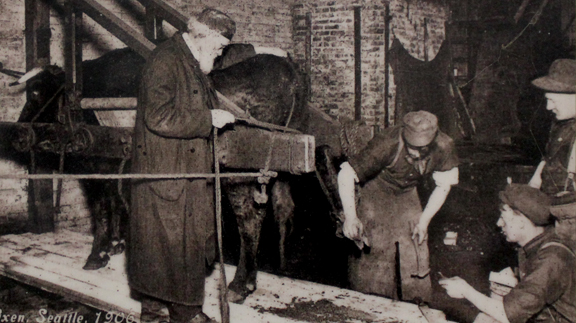
By Laci Jones
With the saying, “Don’t reinvent the wheel,” Lee Liles, owner of the National Museum of Horse Shoeing Tools and Hall of Honor said the same could be said about the horseshoe.
“Nothing is really new in a horseshoe,” he explained. “It just seems to be a revolving circle.”
While the horseshoe has not changed, Liles said the title of the horseshoe specialist has. At some point over time, the horseshoer took on the name “farrier,” he added.
Certification
Horseshoers in the late 19th century needed to have a certificate issued by the Master Horseshoers National Protective Association. Liles said the association was like a union. If someone was caught without being a licensed member, they could be fined $400.
The color of the certificates was different each year, making the certificates easy to identify when entering the blacksmith’s shop.
Other countries like Canada and Germany also required certification. Horseshoers in London in 1909 needed to carry a certificate with them at all times. The certificate was signed by the queen, Liles explained.
Mid-Century Trends
In the 1940s, 1950s and 1960s, all horses had heel caulks on their horseshoes.
“I can remember back in the 1960s we had a shoe we called ‘The Cowboy Shoe,’” he added. The Cowboy Shoe was beveled out on the inside to help shed dirt. Liles said a good cow pony on rough terrain requires a tougher shoe.
“If it weren’t for a horseshoer moving up [in rough country] there would never have been good cattle country,” he said. “He kept the horses sound from being on the rocks.”
He remembered when owners could get away with just trimming their ranch horses in the 1960s. “Getting into the 1970s, you had to put shoes on ranch horses,” Liles added. “Their feet weren’t as strong because the breeding changed their feet a lot.”
The Horse
“The life of a horseshoer is very short,” Liles explained, “especially this day and time more so than the old days.”
To give a time-life-history of the horse, 24 million horses were in the United States in 1915. By 1950, they were down to two million. Farmers began working with tractors and the workhorse phased out, he added. In the late 1950s and early 1960s, horses became luxury items, Liles explained. Owners used horses more on ranches and started horse shows and events.
“In 1965, there was a shortage of horseshoers because most were cavalry horseshoers or taught by somebody who was in the cavalry,” he added. Those horseshoers retired by the 1960s, and there was a need for horseshoeing schools.
Z-Bar Shoe
“Our shoe industry has changed dramatically since 1979,” Liles explained. “We’ve got so may good horseshoes on the market today that you hardly need a forge to heat them up to shape them.”
Liles said the industry now has front and rears in the patterns, which has changed horseshoeing. The Z-Bar shoe may have been patented in 1900 in New Orleans, but the shoe has become more popular in recent years. “It’s popular in our horseshoeing contests,” Liles explained.
The Z-Bar shoe is used on horses that have a bad quarter crack, he added. The shoe relieves the pressure and lets the swelling go down, and the bar distributes the weight in the foot. This is the only patent I ever seen south of the Mason-Dixon Line,” he added.
Current Trends
“Just in the last few years, we’re seeing horseshoes with multiple nail holes,” Liles added. “That is more than we’ve ever had.”
For 200 years in the United States, horseshoes have always had eight nail holes in the shoe. Now, 10 to 16 nail holes are in a shoe. “That’s a dramatic change,” Liles explained. “It gives [farriers] more of an option to where they can rotate the nails around if the foot gets bad, so it’s not a bad deal.”
Shoeing horses on the front end and not the back end is trending in the show horse industry, he explained. When asked why this is trending, Liles said one person started winning, and everybody started thinking it would help them win.
“It’s not always necessary to shoe the back end of a horse,” he said. “Most of the weight on a horse is carried from the front end with the weight of the horse’s neck and the cowboy.”
Marvin Beeman, DVM and educator for the American Colt Horse Association, told Liles how a horse farrier shoes a ranch horse depends on the biographical areas in which they live in.
“If you change your horse from one environment to another environment, it will actually change the growth pattern of the horse’s foot and start a groove around his foot,” Liles explained. “When you change that horse’s environment, the horseshoer can actually read it in his foot.
“That’s hard for a lot of people to imagine, but when you bring a horse from the east coast to the west coast, that’s a dramatic change for that horse.”
Different Materials
Liles said using different materials is a current trend among horse farriers. In the early days of horseshoeing, farriers used wrought iron. Today, most horseshoes are made using plain steel. However, the show horse industry uses a lot of aluminum and titanium.
“A pair of heavy walking horse shoes can cost $5,000,” Liles explained, “but it’s made out of tungsten.”
Plastic and rubber shoes have also become popular in recent years. Amish horses used on roads have horseshoes made of Borium. Borium is a texture that keeps the shoe from wearing out, but it can also have a negative impact on the road.
“If you drive around in Amish or Mennonite country and see a dip in the road, it’s from a horse going down the road,” Liles explained. “A lot of states like Pennsylvania and Ohio have funded projects trying to come up with a traction device horseshoe that will not hurt their asphalt and highways as bad.”
Glue-on shoes have come along after he was an active horse farrier. The dairy industry uses the glue-on shoes more than anybody, he added. Cattle are on water and concrete, and they can have a tremendous problem with foot rot. Liles said proper nutrition can help combat this disease.
“I’ve never seen many horse’s feet that I couldn’t nail a shoe on,” Liles said, “but, I see where they help a lot of horses today.”
To learn more about the history of the horseshoe, visit www.horseshoeingmuseum.com.
This article was originally posted in the August 2016 issue of Oklahoma Farm & Ranch.
-

 Attractions7 years ago
Attractions7 years ago48 Hours in Atoka Remembered
-
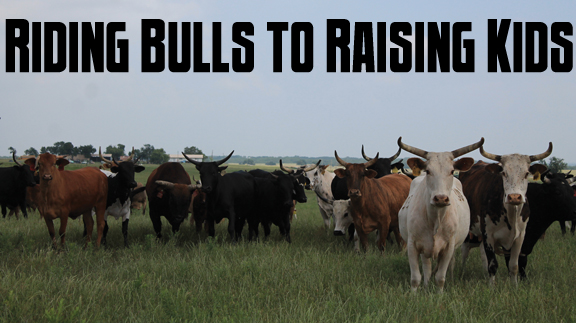
 Country Lifestyle1 month ago
Country Lifestyle1 month agoJuly 2017 Profile: J.W. Hart
-
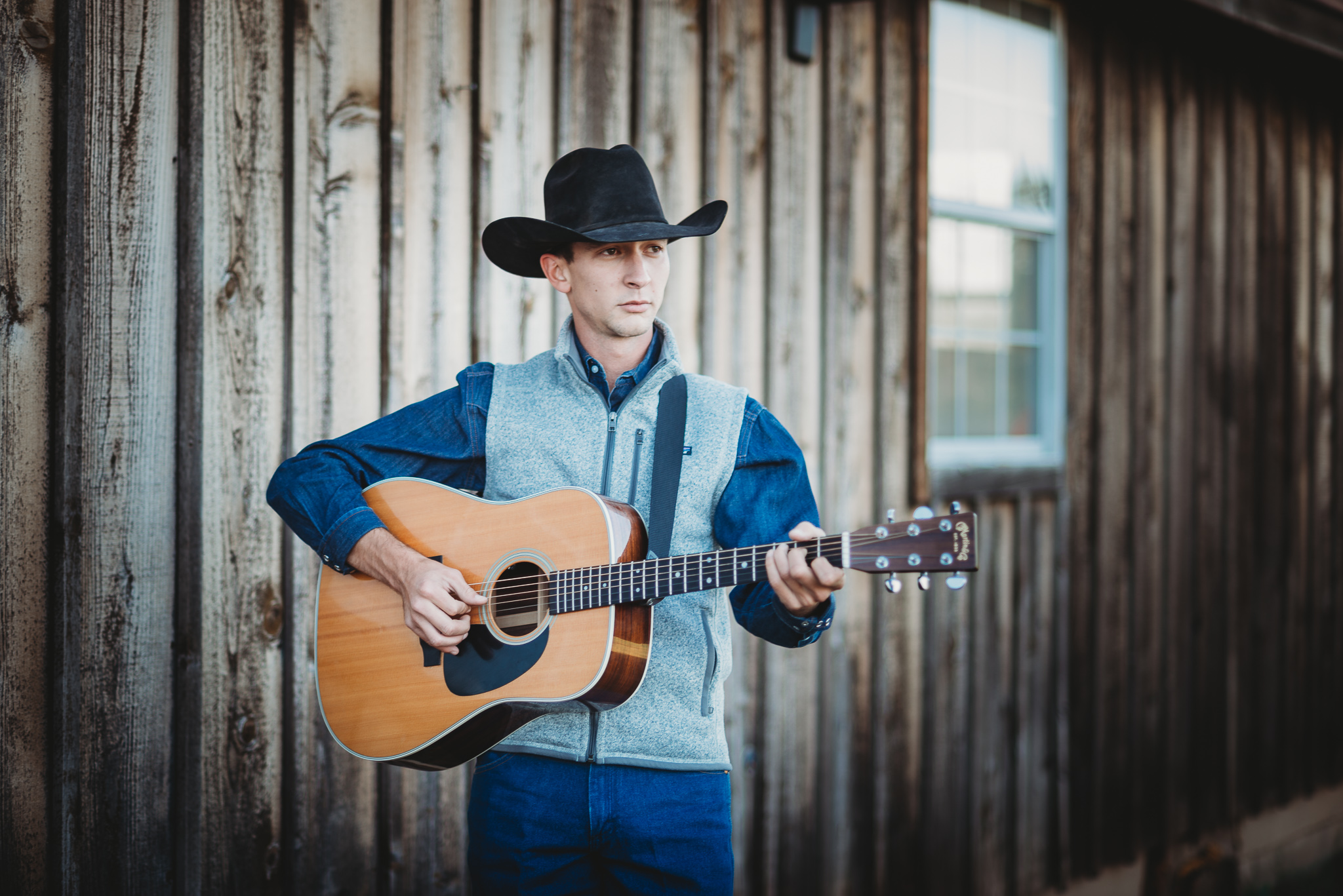
 Country Lifestyle3 years ago
Country Lifestyle3 years agoThe Two Sides of Colten Jesse
-
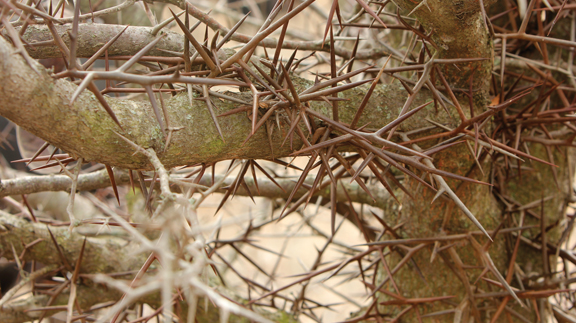
 Outdoors7 years ago
Outdoors7 years agoGrazing Oklahoma: Honey Locust
-
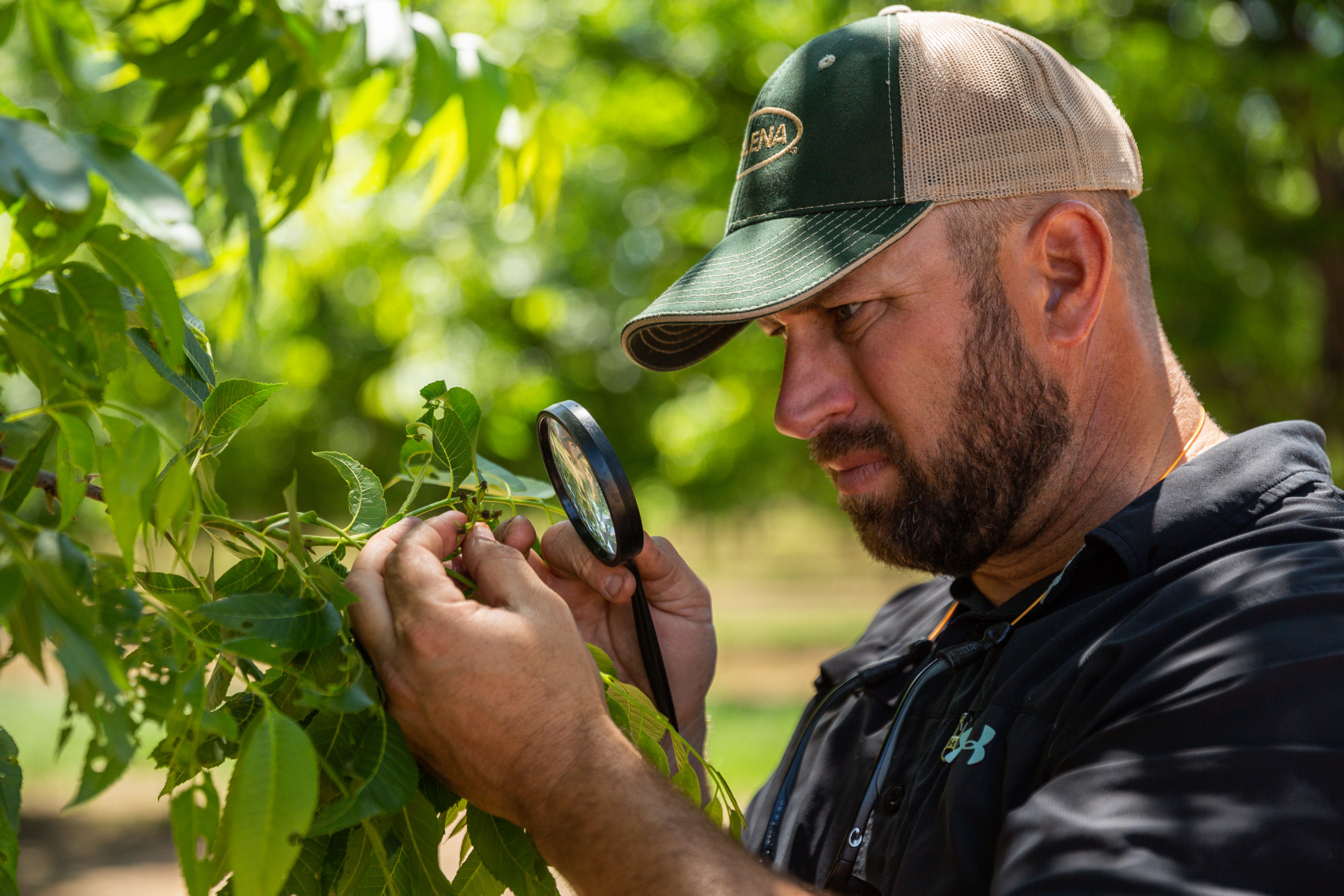
 Outdoors4 years ago
Outdoors4 years agoPecan Production Information: Online Resources for Growers
-
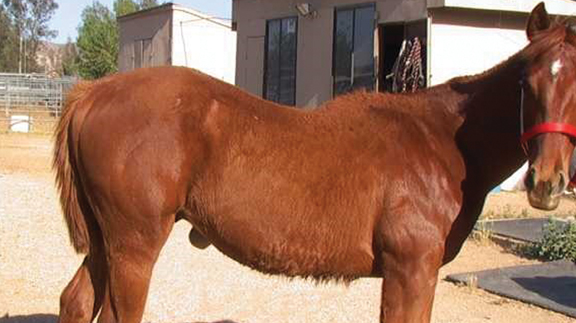
 Equine7 years ago
Equine7 years agoUmbilical Hernia
-
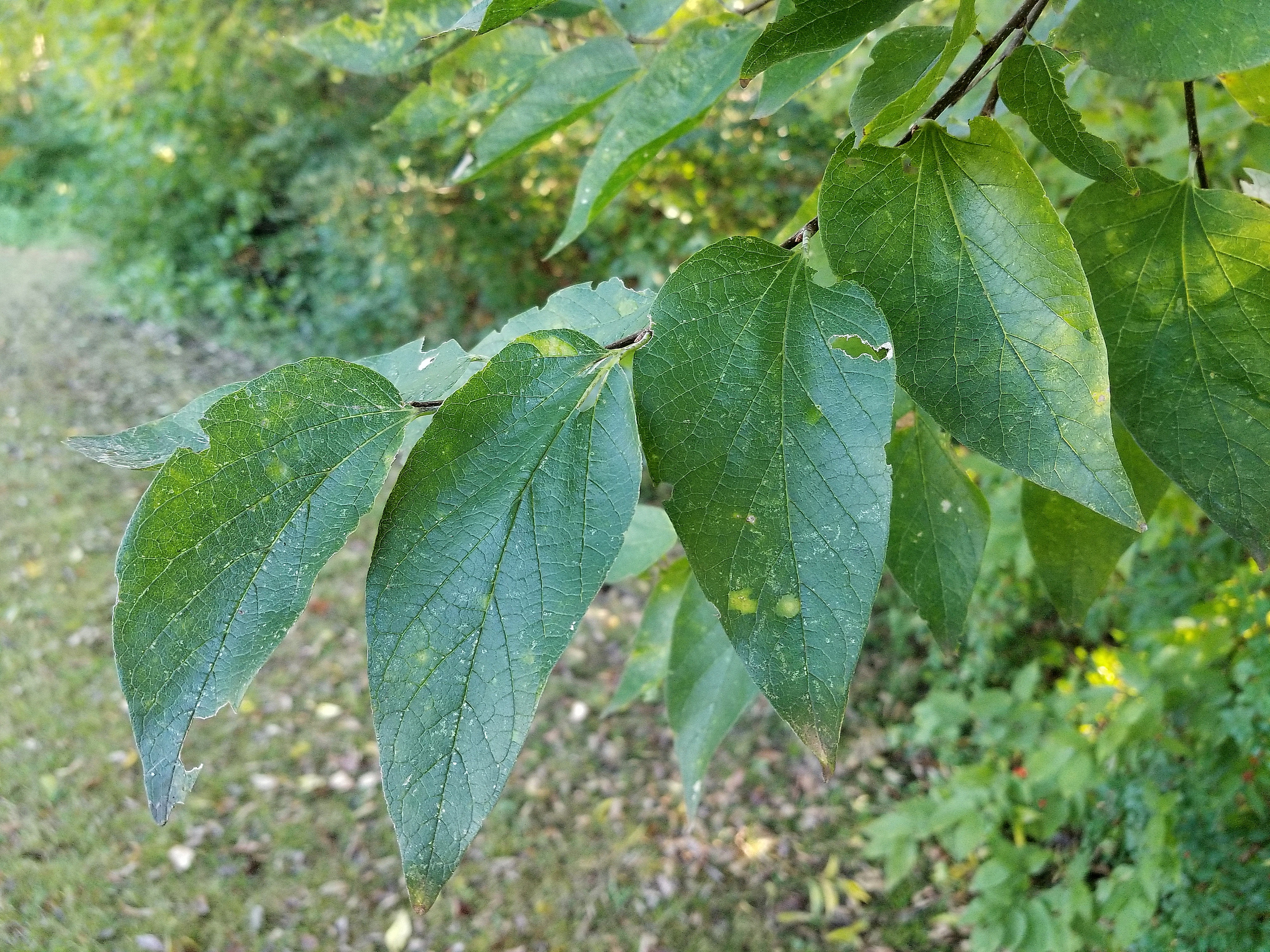
 Farm & Ranch6 years ago
Farm & Ranch6 years agoHackberry (Celtis spp.)
-
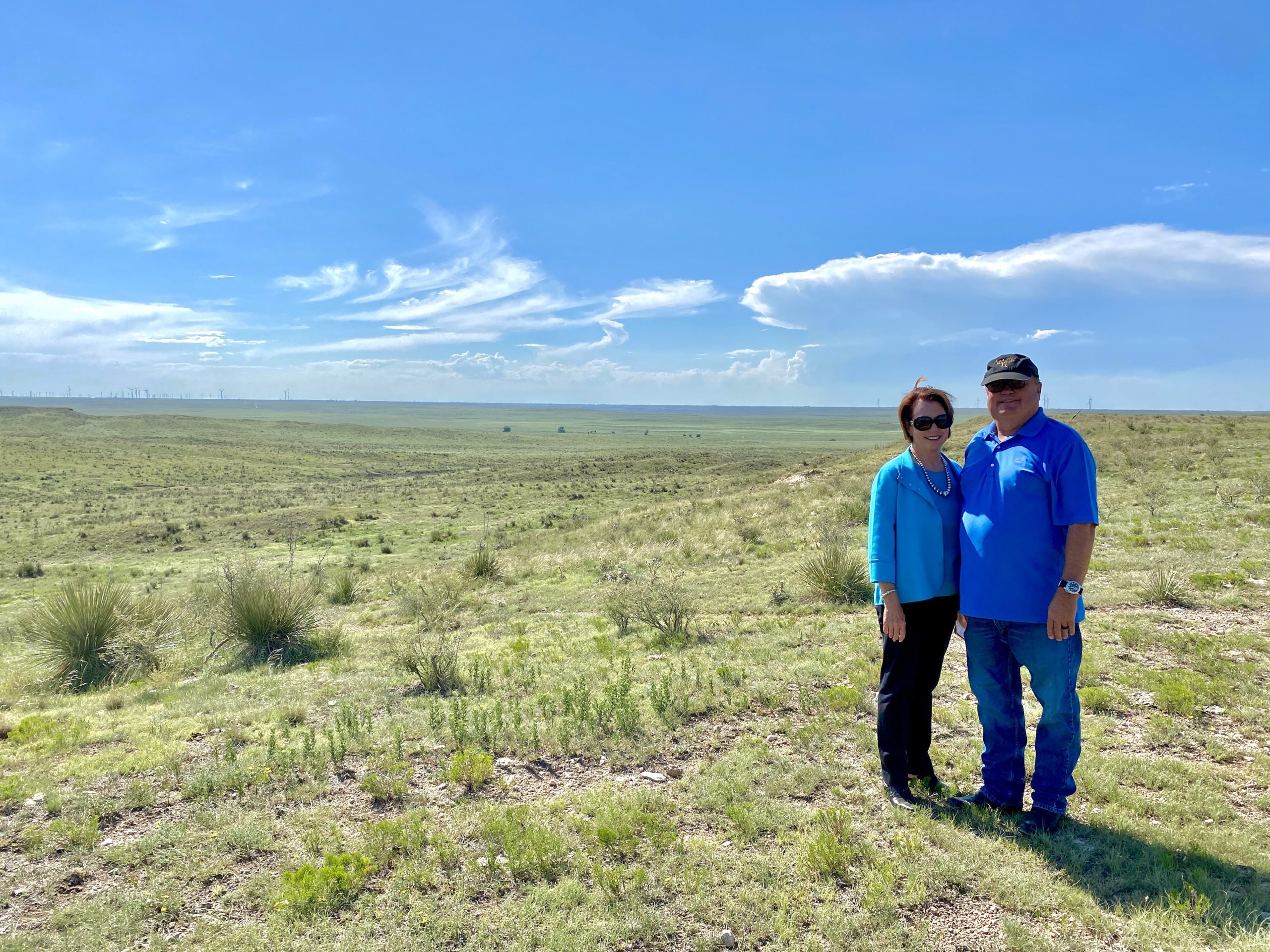
 Outdoors4 years ago
Outdoors4 years agoSuzy Landess: Conservation carries history into the future
